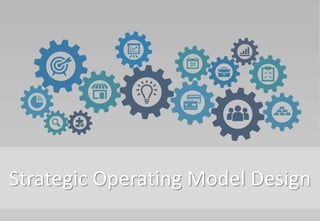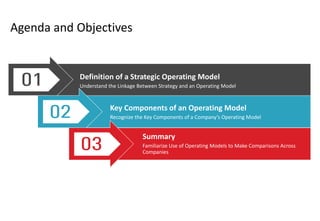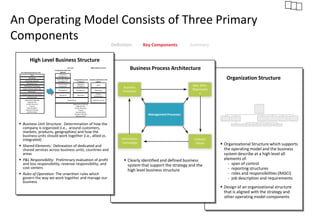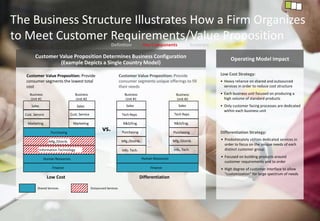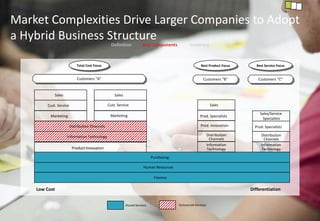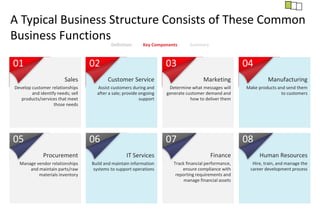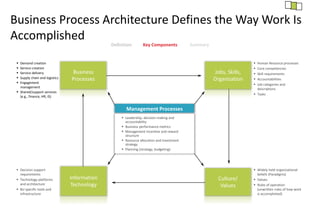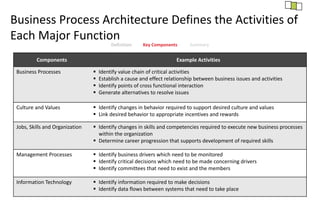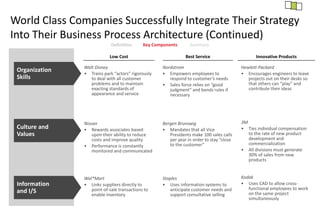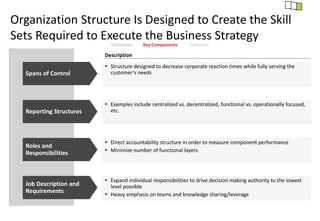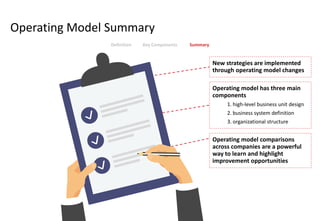The document outlines the design and objectives of a strategic operating model, explaining its importance in aligning a company's vision, mission, and strategies with operational frameworks. It details the key components of an operating model, which include business unit structure, shared services, P&L responsibilities, and rules of operation, emphasizing their role in delivering customer value propositions. Additionally, it discusses how effective integration of organizational structures, processes, and cultures contributes to overall business performance and competitive advantage.
